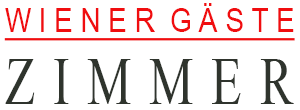Naschmarkt 250g
12,00 €
Details
The cultivation of coffee happens in tropical or subtropical regions. There, you are able to see coffee trees with a height of up to 8 metres. The quality of our coffee depends on the climate. The best coffee comes from places over 1600 metres. The leaves of coffee trees are dark-green and they look leather-like. The red cherries which are harvested come from white blossoms. Actually there are 60 different kinds of coffee-beans; just 2 kinds are relevant in our world market. Arabica: The most high-quality coffee-bean of the world. But it is not really easy to cultivate this sort. This sort is special because of the fine sourness and the special taste which is balanced. Coffee contains many different acids; a special acid is bad for your stomach. The Arabica contains less of this acid than other types of coffee-beans. Robusta: Robusta beans are easier to cultivate than Arabica beans. Robusta contains twice as much caffeine as Arabica. The taste is much more robust. Robusta contains one organic acid which is quite strong- that’s why people often have problems with their stomach when they drink too much of Robusta coffee.
Our three coffee-blends only differ from the grade of roasting. Morning: lightly roasted Naschmarkt: medium roasted Evening: strongly roasted The special coffee flavour is developed by roasting the coffee seeds. Anna, our master in roasting is able to influence the taste of our coffee.
Coffee was discovered in the 9th century, where nomads even chewed the green, raw bean, just to have a stimulating effect. Muslim people were not allowed to drink any alcoholic drink. They liked coffee very much, because of the stimulating effect, the fantastic, and various tastes and of course it was not forbidden to drink coffee. That was also a reason why the Arabic world was the main cultivator of coffee. The Arabs didn’t give the permission to trade with germinal beans, because they wanted to keep their monopoly. But this prohibition did not work out and the Turkish people got hold of the coffee beans. Because of the vastness of theTurkish Empire the diffusion of coffee went ahead fast. The first bags, filled with coffee came to Europe in 1615. After the Turks leagued Vienna in 1683 the Viennese coffee house tradition started to develop.
As soon as the red berries on the coffee plant are ripe, they are harvested and dried open-air for 3 weeks. One red berry contains two coffee seeds- the treasures of this plant. To get these seeds, also called beans, the fruit flesh has to be removed. The further process is roasting the raw green coffee bean.
Coffee is poor in calories although the raw bean contains nutriments like protein, grease and carbohydrate. These nutriments are not water soluble- so the nutriments can’t reach the drink, they stay in the coffee ground. Of course coffee contains a large array of vitamins and minerals. Vitamins: Vitamin B2, Vitamin B6 and pantothenic acid. Minerals: Iron (oxygen transport in body), potassium, magnesium, manganese, copper and chrome. What does caffeine do to your body? - caffeine stimulates the central nervous system - the activity of the heart rises - current augmentation of your efficiency - the Production of hydrochloric acid in your stomach is provoked by caffeine



